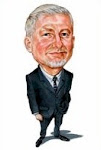Friday August 5, 2011. Thursday’s price action in the price of gold and silver was a short term top. Investors who are planning to buy gold should postpone their purchases for a few months. Speculators should sell now and realize their gains. More aggressive speculators can bet on the decline.
Technicians refer to yesterday’s chart pattern as a Key Reversal Day or an outside reversal day. The price went up in the morning to a new high, then reversed and closed below the low of the previous day. And all this was done on a day of huge volume of trading. Check the charts of the ETFs for Gold and Silver. (Symbols GLD and SLV) See what a Key Reversal Day looks like. It was Thursday August 4, 2011.
This particular reversal was underlined by another statistic: the percentage of investors who are bullish on gold. This is a contrary indicator. When investors are excessively bullish, it’s time to sell. When they are excessively bearish, we should buy. The US financial research firm, Ned Davies, reports that recently there were more gold bulls than any time in the previous five years. Excessive optimism accompanied yesterday’s Key Reversal Day. Rarely is a sell signal so clear to a technical trader.
In my investment book, Beyond the Bull, I suggest that individual investors should improve their own investment techniques by studying the techniques of others. The opening dialogue to this article about trading gold based on Thursday’s price action is a good example. Many investors dismiss technical trading. They try to use economic data and financial events as a way to help them make investment decisions. If they feel, as now, that the US economy might be weak for a while, they may decrease their holdings of stocks and increase their holdings of bonds. For these investors the idea of selling because of price action seems crazy: we should sell because of economic action. And, human nature being what it is, they will often argue why their approach is good and someone else’s approach is not. Instead of pondering the performance of their portfolio and searching for investment techniques that improve performance, they use their intellects to defend their ego: my way is better than your way.”-Buying and holding for the long term is better that trading.” “-A diversified portfolio is better than a focused portfolio.” “-It’s always better to have all your cash working for you.” These statements all come from one’s ego, not from one’s desire to make money in the investment world. Rather than thinking from an ego position, I recommend using scientific methodology to develop your investment judgement. Scientists ponder a theory, and then test it by conducting experiments and making observations. In the investment world, we could ponder the theory that “Key Reversal Days” herald declines. Then we would take note of last Thursday’s action; then sit back and observe what happens over the next few months. We would test the idea.
If we were more ambitious, we could examine many stock charts, looking for Key Reversal Days in the past, and see if, in fact, the price did go down after such an event. We would look for proof in the real world, rather than defending our own theory.
One of the reasons why most investors resort to ego gratification rather than scientific observation is because of the competitive nature of the investment world. In a competitive world, we compare ourselves to everyone else. This is especially true for investment professionals. They all want you to believe their truth, not the truth of the other professional who is competing for your business. They are proud of their reputations. They enjoy being right. So intense is this competition that it draws ego driven clients to the investment world. When I attended Merrill Lynch’s training program in 1976, they talked openly about the kind of personalities that made the best stock brokers; competitive, intelligent, aggressive, ego driven personalities. The investment world is a world of big egos.
In order to add other investors ideas to your own repertoire of investment techniques, you have to be open, objective and respectful – the exact opposite of egotistical. One of the most successful investors of the modern era was Sir John Templeton. His book was entitled: The Humble Approach. If you have occasion to see videos of today’s investment icon, Warren Buffet, you will see a portrait of a humble man. Re-read the first three paragraphs of this article: they seem to have been written from an ego position, don’t they? Cocky, confident, full of advice. Don’t be seduced by that egotistical manner. Observe the author’s theory objectively and humbly. Make a few notes and observe the price of gold, silver and precious metals mining companies over the next few weeks and months. See if the notion of a “sell signal” can be useful in your investment world.
Monday August 8, 2011. Gold opened at a new all time high price, negating Thursday’s egotistical sell signal that was “so clear.” Gold went higher in the short term, not lower. The sell signal didn’t work. Will the technical trader who gave his advice in such a cocky confident manner become more humble? More importantly, will you become more humble? My book, Beyond The Bull, challenges investors to learn from other investors’ victories and defeats. What can we learn about using sell signals in our own investing? The arrogant and the cocky like to show you those times when their signals worked in order to persuade you to do business with them. What can you learn from a person who shows you the time the technique didn’t work in order to persuade you to do business with him?
Monday, August 8, 2011
Subscribe to:
Post Comments (Atom)

No comments:
Post a Comment